巻号一覧

54 巻 (2015)
- 6 号 p. 261-
- 5 号 p. 229-
- 4 号 p. 163-
- 3 号 p. 115-
- 2 号 p. 69-
- 1 号 p. 1-
前身誌
54 巻, 2 号
選択された号の論文の12件中1~12を表示しています
- |<
- <
- 1
- >
- >|
巻頭言
-
平野 聡2015 年 54 巻 2 号 p. 69
発行日: 2015年
公開日: 2016/05/01
ジャーナル フリーPDF形式でダウンロード (149K)
カメラアイ小特集「UAVを用いた調査・計測事例と 安全確保に向けた取り組み」
-
今井 靖晃2015 年 54 巻 2 号 p. 70-71
発行日: 2015年
公開日: 2016/05/01
ジャーナル フリーPDF形式でダウンロード (551K) -
渡辺 豊2015 年 54 巻 2 号 p. 72-73
発行日: 2015年
公開日: 2016/05/01
ジャーナル フリーPDF形式でダウンロード (360K) -
木本 啓介, 西村 正三, 松田 浩2015 年 54 巻 2 号 p. 74-75
発行日: 2015年
公開日: 2016/05/01
ジャーナル フリーPDF形式でダウンロード (350K) -
番上 勝久, 原田 耕平, 西村 芳夫2015 年 54 巻 2 号 p. 76-77
発行日: 2015年
公開日: 2016/05/01
ジャーナル フリーPDF形式でダウンロード (286K) -
関谷 知孝, 山本 彩, 加藤 光治, 林 信行2015 年 54 巻 2 号 p. 78-79
発行日: 2015年
公開日: 2016/05/01
ジャーナル フリーPDF形式でダウンロード (278K) -
石川 紀明2015 年 54 巻 2 号 p. 80-81
発行日: 2015年
公開日: 2016/05/01
ジャーナル フリーPDF形式でダウンロード (339K) -
鵜飼 尚弘2015 年 54 巻 2 号 p. 82-83
発行日: 2015年
公開日: 2016/05/01
ジャーナル フリーPDF形式でダウンロード (289K)
技術報告
-
田中 亘, 島谷 幸宏2015 年 54 巻 2 号 p. 84-89
発行日: 2015年
公開日: 2016/05/01
ジャーナル フリーWe studied the fine scale prediction method of Urban Density (UD) for inundation analysis using Landsat OLI image, in Nakhon Sawan, Thailand. A generalized additive model (GAM) and model selection using Akaike's Information Criteria (AIC) in two different seasons (March and November) were conducted. The result showed as follows. 1) The explanation power of the models using the explanation variables calculated by Landsat OLI image in November were relatively higher than that of the models in March. 2) UD in 30m grid squares was strongly positively related to Urban Index, At-satellite Brightness Temperature, and Color Complexity which was defined as the indicator of complexity in color distribution pattern of satellite image in this paper. The coefficient of determination R2 of the best model was 0.649. The result suggest that UD can be predicted in the decent accuracy for inundation analysis in Nakhon Sawan without much effort and cost. This prediction method cloud be applied the urban areas threatened with flood risk in the world.抄録全体を表示PDF形式でダウンロード (603K)
研究速報
-
坂田 健太, 力丸 厚, 桑原 直樹2015 年 54 巻 2 号 p. 90-94
発行日: 2015年
公開日: 2016/05/01
ジャーナル フリーTerrestrial laser scanner (TLS) that have utility in the spatial information acquisition was used in such as three-dimensional measurements of the structure and topography. Reflectance values, which have been recorded together with the three-dimensional information, but it is hardly used for the analysis. TLS Reflection values are affected by several factors. For improvement of TLS data analysis, it is important to elucidate the reflection characteristics of several factors. In this study, it elucidated of the characteristics of the observed object and the unit irradiation, as below. Depending on the occupancy in the unit irradiation area of the objects, the reflectance value is change.抄録全体を表示PDF形式でダウンロード (547K) -
薗部 礼, 谷 宏, 望月 貫一郎, 王 秀峰2015 年 54 巻 2 号 p. 95-100
発行日: 2015年
公開日: 2016/05/01
ジャーナル フリーCrop classification maps are required for the management of crops and for the estimation of agricultural disaster compensation. In this study, classification using TerraSAR-X data (including TanDEM-X) was performed. Applying the m-chi decomposition to the dual-polarized SAR data (HH and VV polarization), the three components, double (even) bounce, randomly polarized and single (odd) bounce, were derived. Then, besides gamma naught (HH and VV polarization) data, the three components were obtained and evaluated regarding their usefulness in crop classification. The comparisons between the Kernels based Extreme Learning Machine (KELM) and Random Forests (RF) algorithms were also performed. It was found that KELM performed better, achieving an overall accuracy of 93.4% based on the three components and gamma naught values for HH and VV polarizations.抄録全体を表示PDF形式でダウンロード (334K)
解説
-
小門 研亮2015 年 54 巻 2 号 p. 101-106
発行日: 2015年
公開日: 2016/05/01
ジャーナル フリーThe Geospatial Information Authority of Japan (GSI) has established and maintained horizontal and vertical control network for land survey in Japan, which consists of about 130,000 control points such as GNSS earth observation network (GEONET) stations, triangulation stations, and bench marks. The horizontal coordinates (latitude and longitude) or orthometric height of the stations and bench marks are published as survey results, and utilized for public surveys. The development of GNSS technique and GEONET gave a strong momentum to improving efficiency of surveying for control points. Although the surveying for public control points had been based on triangulation points, a new survey procedure, in which GNSS surveying can be conducted with only GEONET stations as reference points, was introduced on public survey in Japan in April 2002. After that, semi-dynamic correction was also introduced to reduce the adverse effects of the distortion due to crustal movement in public surveys in January 2008. GEONET has been also utilized for orthometric height determination by GNSS surveying since April 2014. Considering the development of GNSS survey technique and GEONET stations as stable reference points, the GSI decided to switch main geodetic control points from triangulation points to GEONET stations in next 10 years and publicly announced the new direction at the end of June 2014.抄録全体を表示PDF形式でダウンロード (289K)
- |<
- <
- 1
- >
- >|